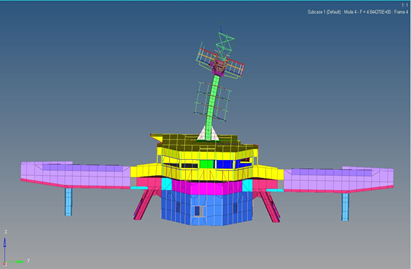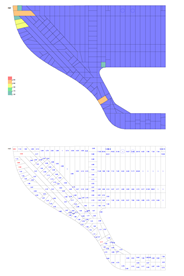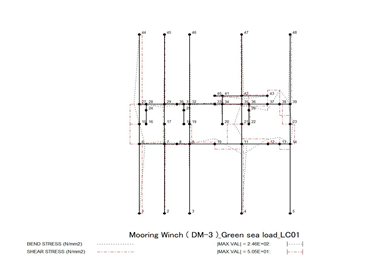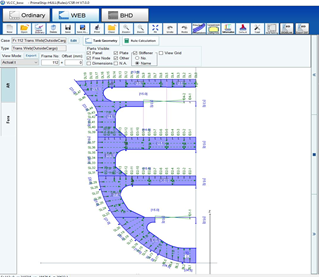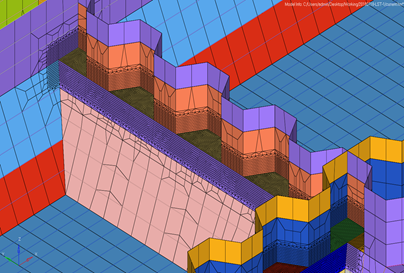VIBRATION ANALYSIS
In order to detect vibration problem of accommodation and equipment on it, an FE model is used to consider effect of Hull structure in vibration modes. Basically, a reinforcement plan need to be determined to avoid vibration resonance to Main Engine and Propeller operation.
BUCKLING STRENGTH ASSESSMENT
Buckling check shall be performed to determine buckling problems especially for structural elements such as stiffened and unstiffened panels, Web plate in way of openings, corrugated bulkheads, strut, pillars and cross ties. In IEMV, we usually carry out buckling analysis by specialized software developed by JMU, such as saiasb4a, saiaspb, ... these softwares can provide quick & reliable results.
DIRECT STRENGTH ASSESSMENT
Direct strength assessment for Bulk Carriers and Tankers by PSH-DSA (in accordance with NK-Rules) :
This Finite Element Analysis (FEA) to be applied in order to get higher accuracy results in complex working conditions (due to Cargo load, sea water pressure in static/dynamic mode...) by intergrating NK-Rules into program, the important evaluation such as Yielding, Buckling, Screening,Fatigue... to be assessed in detail and can be supported to design process effectively.
LOCAL STRENGTH ANALYSIS
Local strength analysis for reinforcement under Deck mooring equipment :
Evaluate and determine scantling, detail of reinforcement for Deck mooring equipment.
The reinforcement type (Bkt, F.B, I.A..) to be designed depend on actual Hull structure in order to withstand above mooring equipment in most serious working loads. The scantling of reinforcement to be judged and determined finally basing on results of calculation.
THE RULES CALCULATION
Rules calculation for Bulk Carrier and Tanker by PSH-Rules (in accordance with NK-Rules):
- Evaluate Hull Girder Strength (I/y, Bending, Shear, Ultimate stress).
- Evaluate Local Support Member ( Plate, Longl. , Stiffener...)
- Buckling evaluation for longl. member.
- Fatigue evaluation at intersection points between Trans vs Longl member.
- Sloshing analysis for liquid in Tank.
- Slamming analysis and Bow impact evaluation.
- ....
A TYPICAL FE MODEL JOB
A Typical FE model job can be descripted as below:
- Define nodal point location (Geometry)
- Create element connecting the nodal points (Meshing)
- Input properties (thickness plate, beam properties, mass properties,...)
- Define boundary condition
- Define Loading or forcing details
- Input Analsysis options. depend on the scope of model, a FE model can be divided to Global model, Coarse mesh model or zooming model.



